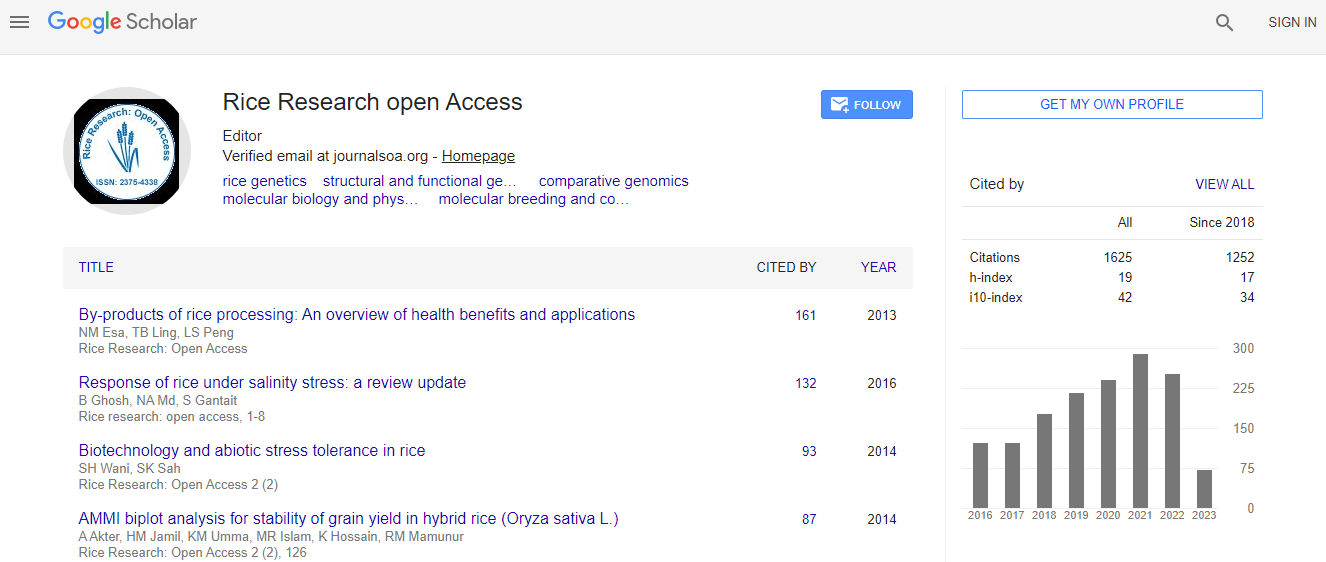Research Article
Root QTL Pyramiding through Marker Assisted Selection for Enhanced Grain Yield Under Low Moisture Stress in Rice (Oryza sativa L)
| Grace Sharon Arul Selvi, Uday G and Shailaja Hittalmani* | |
| Department of Genetics and Plant Breeding, University of Agricultural Sciences, Bangalore-65, India | |
| Corresponding Author : | Shailaja Hittalmani Professor and University Head Genetics and Plant Breeding University of Agricultural Sciences GKVK, Bangalore-560065, India Tel: 91-8023624967 E-mail: shailajah_maslab@rediffmail.com |
| Received: December 03, 2015; Accepted: December 13, 2015; Published: December 18, 2015 | |
| Citation: Selvi GSA, Uday G, Hittalmani S (2015) Root QTL Pyramiding through Marker Assisted Selection for Enhanced Grain Yield Under Low Moisture Stress in Rice (Oryza sativa L). J Rice Res 3:157. doi:10.4172/2375-4338.1000157 | |
| Copyright: © 2015 Selvi GSA, et al. This is an open-access article distributed under the terms of the Creative Commons Attribution License, which permits unrestricted use, distribution, and reproduction in any medium, provided the original author and source are credited. |
|
| Related article at Pubmed, Scholar Google | |
Abstract
Drought is the foremost limiting factor affecting rice production especially in the critical reproductive growth phase. Several mechanisms that resist/ tolerate or avoid drought stress have been elucidated and documented in many crops. In this study, Quantitative trait loci pyramiding (QTL) pyramiding for root morphological traits and an evaluation of the effects of QTLs in combination. Four QTLs present on chromosomes 1, 2, 7 and 9 in a nearisogenic line (NIL) population derived by backcrossing 4 doubled haploid lines of IR64/Azucena cross into IR64 were used to develop pyramids. These NILs were crossed pair-wise to arrive at combinations of two-QTL and three-QTL pyramids. Among the generated QTL pyramids, qRT6-2 x qRT11-7 and qRT6-2 x qRT19-1+7 were found to have higher yields than parent IR64 under moisture stress situation. QTLs present on different chromosomes showed maximum antagonistic effects in comparison with the different QTLs present on the same chromosome. The pyramids also show a relative increase of the NILs in terms of height, number of tillers and number of panicles, however, pyramids not show an increase in the dry matter accumulation which implies that the partitioning of the biomass is directed towards the below ground parts, leading to less sturdy plants that perform averagely under moisture stress situations.

 Spanish
Spanish  Chinese
Chinese  Russian
Russian  German
German  French
French  Japanese
Japanese  Portuguese
Portuguese  Hindi
Hindi 
